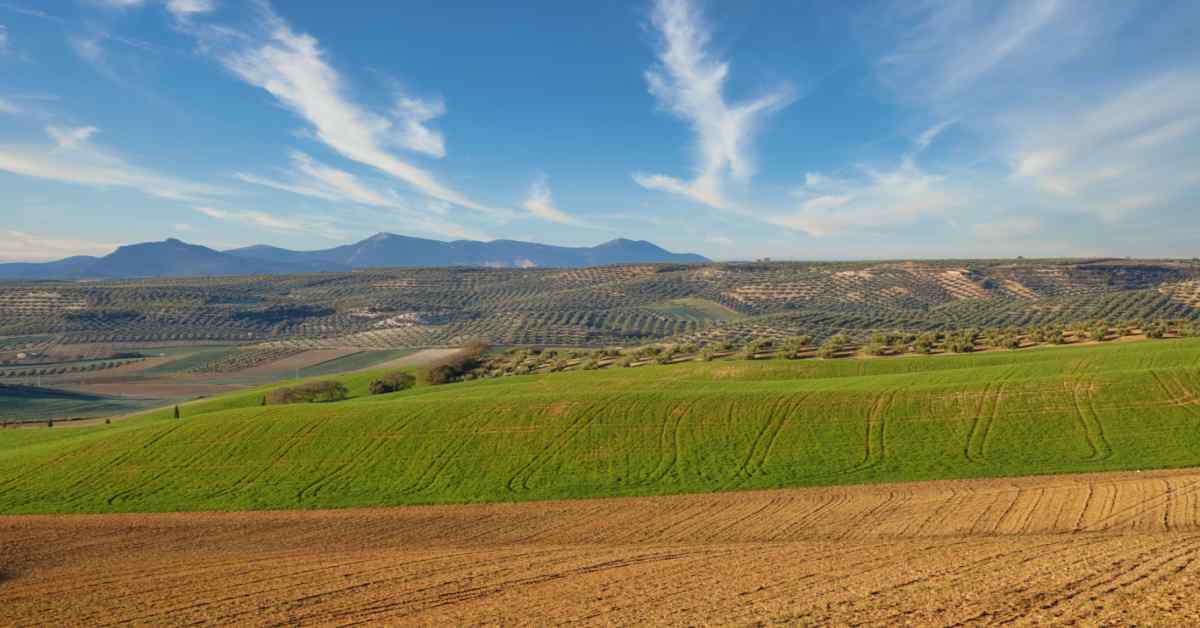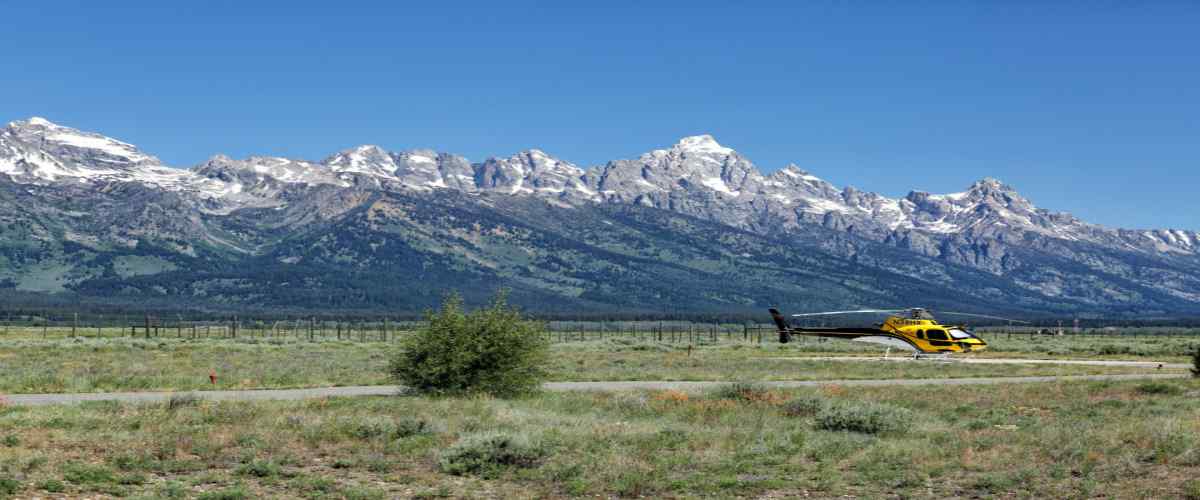Table of Contents
Quality Service Guarantee Or Painting Free

Get a rental agreement with doorstep delivery

Find the BEST deals and get unbelievable DISCOUNTS directly from builders!

5-Star rated painters, premium paints and services at the BEST PRICES!
Loved what you read? Share it with others!


Submit the Form to Unlock the Best Deals Today
Help us assist you better
Check Your Eligibility Instantly

Experience The NoBrokerHood Difference!
Set up a demo for the entire community
Explore Types Of Land Zoning: Unlock The Wonders Of Nature Today
Table of Contents
Like all other nations, different types of land in India are utilised for various purposes. However, how land is put to use is contingent not only on the land's terrain, soil, and climate but also on a variety of human factors, including population density, length of time people have lived in an area, tenure of land, and the level of expertise of its inhabitants.
Because the land sustains our entire ecosystem, careful management of land resources is essential. Therefore, the government's role in land use planning is critical for the orderly growth of urban and rural areas. To fulfil this objective, several different development authorities have been set up.
In this article, we'll delve deeper into the various types of lands, their uses and legislation in India, the many real estate zoning types and their relevance, and why knowing this information is crucial for every real estate investor.
Quality Service Guarantee Or Painting Free

Get a rental agreement with doorstep delivery

Find the BEST deals and get unbelievable DISCOUNTS directly from builders!

5-Star rated painters, premium paints and services at the BEST PRICES!
What are the Different Types of Land Resources Available in India?
The world relies on India's land resources just as much as the people there do. India is blessed with abundant terrain, including arable land, forest, mountain, plains, and plateaus.
- Arable Land–Sixty per cent of India's territory is considered arable land suitable for agriculture. The vast majority of this fertile terrain is devoted to farming. The agricultural sector employs almost half of India's labour force and accounts for about 15% of the GDP.
- Forests–India has around twenty-one per cent of its territory covered by forests. Because they offer lumber and fuelwood, India's forests are vital to the country's economy.
- Mountains–About thirty per cent of India is made up of mountains. It's a great place for adventure tourism and other forms of recreation that can bring in money.
- Plains–Nearly forty-three per cent of India consists of plains. Land on the plains can be used for farming, manufacturing, and even building homes.
- Plateaus–More than twenty-seven per cent of India is made up of plateaus, and these areas are rich in resources like minerals, fossil fuels, and forests.
What is a Land Use Pattern?
Factors such as population, technological advancement, proficiency, population size, culture, and human ability should be considered when designing a land use plan. For example, most of the country's land is used for the following.
NSA (Net Sown Area)
Net sown area refers to the land planted with crops in the given year. Therefore, the agricultural output is extremely dependent on this land use.
More Than One Sown Area
This type of land is used to grow more than one crop annually. Nearly all farmable land has been used for farming. Hence increasing agricultural output requires increasing cropping intensity, which can be done by increasing the area sown many times.
Land of Forest
This includes publicly owned and privately held properties that are forested or retained as potential forest land. The forest area comprises forested regions and agriculturally developed or grazed forest land.
Non-Cultivable Land
This class of real estate encompasses two distinct types of terrain.
- Non-Agricultural Uses of Land - Cities, towns, highways, railroads and underwater terrain are non-farming land uses.
- Waste Land - Vacant or unusable land found on mountainous terrain, in arid regions, or rocky areas is known as "wasteland."
Land Devoted to Grazing and Perpetual Pastures
There are 10.3 million acres of permanent pastures and other grazing grounds. This represents roughly 4 percent of the total land area in the country.
Tree Plantations and Groves
All arable land not included in the NSA's definition of "forested" is included here. For example, land used for growing fuel sources, such as casuarina trees, shrubbery, bamboo, thatching grass, and other species not often associated with orchards, falls under this heading.
Agricultural Waste Land
For several reasons, such as a lack of water, alkalinity, soil erosion, and waterlogging, arable land is underutilised for cultivation, even if available.
What are the Land Use Regulations of India?

Local governments or municipal bodies in India are responsible for drafting the country's zoning regulations. The construction of buildings and the utilisation of land are both regulated by these regulations.
Numerous government agencies are responsible for land-use planning. A land use plan, often known as a Development Plan or Master Plan, is created by the government.
For instance, the DDA (Delhi Development Authority) has developed a 2041 draught MPD (Master Plan for Delhi) and a 2041 draught Land Use Plan. The MPD (Municipal Planning Document) 2041 establishes guidelines for the city's growth.
As of 2013, the Rural Development Ministry had drafted a National Land Utilisation Policy intending to adopt measures to ensure optimal land utilisation through appropriate land-use planning and management.
What Does "Zoning" in Real Estate Mean?
"Zoning" is a practical term for dividing a large tract of land (such as a city or township) into smaller tracts with specific uses and regulations. Zoning is a tool used by governments to regulate the growth and use of land. The goal of enacting zoning rules is to establish uniform standards for buildings, and land uses within each zone.
A development authority concerned with urban planning is aware of the land bank and uses it to ensure the area's overall development. The government agency then sets up different zones on the land for different functions. The term "zoning" describes the whole procedure of dividing the land bank and designating a use for each portion.
Why is Zoning Necessary in Real Estate?

The reasons why Land Zoning is necessary for Real Estate are explained below.
- Land uses are designated through zoning laws.
- Zoning is necessary to avoid careless and unchecked construction unsuitable for the designated zone.
- Zone segmentation guarantees land is used as planned.
What are the Different Types of Zoning?

There is no guarantee that a certain zoning classification in one city corresponds to the same thing in another.
Local administrations use the alphabet to denote the function of each zone. These letters are then matched with a numerical value describing the property's purpose, floor area, or total land area. However, sot examines each category individually.
1. Residential Zoning
When we talk about "residential zoning," we're referring to an area where people may live without worrying about their home being used for anything else, whether for profit or political, religious, or sectarian purposes. The residential zone's open areas include parks, gardens, playgrounds, and commercial strip centres.
2. Commercial Zones
The local government has designated a certain region as "commercial zoning," meaning that the land is intended for business uses such as stores, offices, banks, restaurants, and the like.
3. Zones Reserved for Agriculture
As designated by municipalities, agricultural zoning is meant to shield farmland and agricultural operations from development that would be inappropriate in such an area.
4. Industrial Sector
There will be no residential development on this site, only factories and industrial communities. Typically, this neighbourhood can be located on the city's outskirts.
5. Hospitality and Hotels
Accommodations have special sections, including hotels, B&Bs, cafes, and restaurants. Only developments of this type are permitted in this location.
6. Shopping Centres and Stores
"Retail Property" is real estate that houses a shop, mall, or similar retail or service establishment.
7. Governmental Facilities
A park, waterfall, or playground can be built if the city council has designated a specific spot. However, private or public structures can only be constructed in a public park.
8. Provisions for Rural Areas
Typically, ranches and farms make up rural zones, although rural zones may include residential areas where cattle and horses are permitted in other regions of the country.
9. Heritage Zoning
In historic districts, when buildings are at least 50 years old, the legislation prohibits any structural alterations. After that, however, there will be room for fixing and fixing up while still being eligible for government tax breaks.
What is the Meaning of Different Zoning Colours?

Colour-coded zones on maps visually represent data, including land use, proximity to highways and other public amenities, and more.
To help you make sense of all these shades, here's a handy table view.
| Colour Codes | Significance of Colour Codes |
| Light yellow shade | Land that is primarily/partially set aside for residential use. |
| Dark sun-shy yellow | Zone secured for mixed-use residential properties with permission to essential services. Around 33% of commercial activity is allowed. |
| Green | To denote greenery or agricultural land. Also used to show forests, streams, hillsides, lakes, gardens, and cemeteries. |
| Red | Gardens, places of faith, and other public and semi-public spaces. |
| Sky Blue | A commercial establishment, an office building, etc. |
| Dark Blue | Commercial malls, hotels, movie theatres, and similar public areas. |
| Soft violet | Individualised business or industrial purpose. |
| Deep violet | Technologically advanced businesses. |
| Grey | For all heavy-industries. |
How to Convert Agricultural Land to Non-Agricultural Land?
Since the 1990s, when India's economy was liberalised, urbanisation has become the norm across the country. This shift has resulted in the rapid urbanisation of formerly rural areas.
Changes to several statutes by several influential state administrations in the last few decades have also aided this process. For example, amendments to certain acts, such as a modification to Section 143 of the 'UP Zamindari Abolition and Land Reforms Act' brought in by the UP Government in 2014, have permitted the conversion of fertile land (which is utilised for agriculture) to residential land in most states.
To change land use, the relevant government must pay a "conversion charge". It is typically between 3% and 10% of the home's value. On the other hand, there are cases where prices are set at a predetermined level per square metre or foot.
To make a proper application, the owner must apply and provide the following documents.
1. Proof of ownership
2. Sale Deed
3. Mutation Deed
4. Document of Gift Partition for inherited land
4. A written account of rent and harvest
5. 7/12 extract (in some states)
6. Certificate of no liens or encumbrances
7. NOC (No-objection certificate) from the municipal corporation of the area
The owner must also provide a survey map of the area, a land utilisation plan, a project report (for residential developments), proof of payment of land revenue (tax), and a water portability certificate issued by an accredited laboratory (in case of the farmhouse). Most of these titles and deeds are held by the tax office and can be requested there.
Arable land, forests, mountains, plains, and plateaus are only a few of the many distinct types of land resources that India possesses. The government employs land zoning, dividing a larger property into smaller areas with particular uses and rules, to control how the land is used.
Residential, commercial, agrarian, industrial, and hospitality and hotel zoning are the five basic categories of types of land zoning. Real estate investors should be aware of these zoning classifications.
NoBroker is particularly well-suited to those looking for something different in their next home. We have a wide range of properties on our platform, from apartments and houses to villas and flats. And not only just houses. We provide various land zone properties according to your purpose.
So if you're looking for a new landscape, NoBroker is a great place to start. We can help you find the perfect property for your needs and save you money.

FAQ's
A1: R-zone refers to a residential area where only residential construction is allowed.
A2: Residential construction, often planned developments, is intended for the land designated as the yellow zone. In addition, several small businesses can be established in the yellow zone, such as grocery stores, milk stands, etc. These are intended to enhance locals' quality of life.
A3: For use in commercial settings like the Central Business District, offices, etc., light blue Dark blue is used in retail settings like restaurants, motels, malls, and movie theatres.
A4: Once you close on the property, you become the owner and have the rights of possession, control, exclusion, enjoyment, and disposition.
A5: In India, anyone can purchase agricultural land. However, an individual can only purchase 59.95 acres of land.
Recommended Reading

Guideline Value in Chennai: Meaning, Importance and Steps to Check
January 31, 2025
15859+ views

Circle Rate in Delhi: Meaning, Latest Updates and Calculation 2025
January 31, 2025
16241+ views

Fractional Ownership and How It Is Affecting the Commercial Real Estate World
January 31, 2025
4346+ views

Maharashtra Ready Reckoner Rate 2025
January 31, 2025
7664+ views

Maharashtra Stamp Act: Understanding Its Impact and Changes
January 31, 2025
25677+ views
Loved what you read? Share it with others!
Most Viewed Articles

Franking Charges Explained: Meaning and Benefits
January 31, 2025
1047494+ views

What is the BBMP E-Khata Registration process for property owners in Bangalore, Karnataka in 2025?
February 5, 2025
92463+ views

Supreme Court Verdict on Society Maintenance Charges
January 31, 2025
75973+ views

All You Need to Know about Revenue Stamps
January 31, 2025
63642+ views

Stamp Duty and Registration Charges in Bangalore in 2025
January 23, 2025
55871+ views
Recent blogs in
e-Aasthi BBMP: Search Property Details, Download Certificates, and Check Status Online
February 5, 2025 by Suju
What is the BBMP E-Khata Registration process for property owners in Bangalore, Karnataka in 2025?
February 5, 2025 by Suju
How to get Non-Encumbrance Certificate Online and Offline: Download and Check Status 2025
February 5, 2025 by Vivek Mishra
Simple Introduction to Indian Property Tax
January 31, 2025 by NoBroker.com
Sales Agreement: Process, Format and More 2025
January 31, 2025 by Vivek Mishra



Join the conversation!